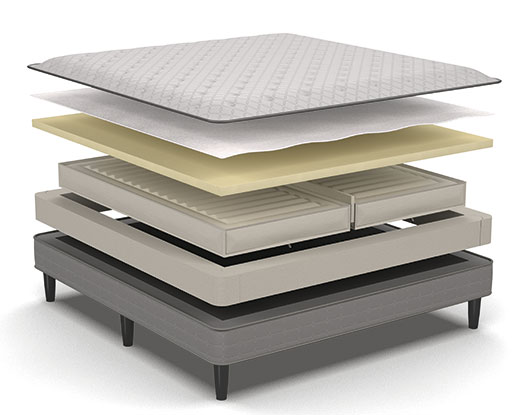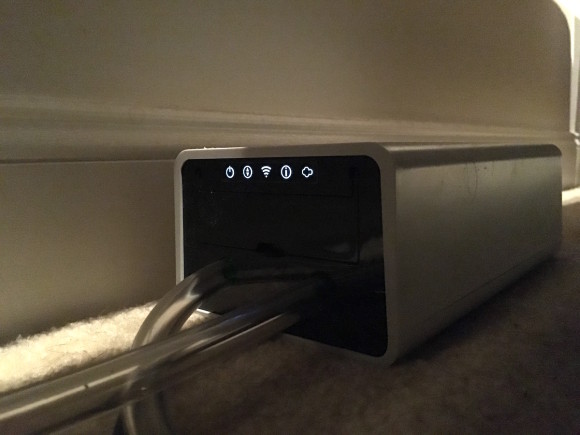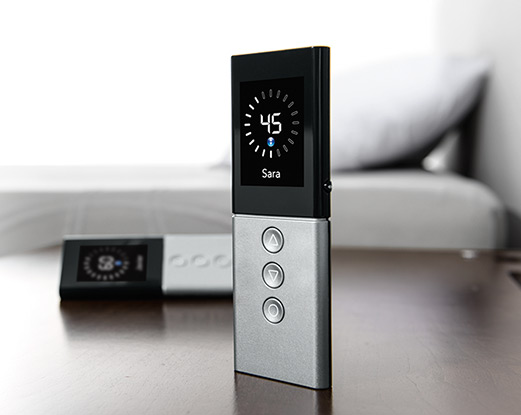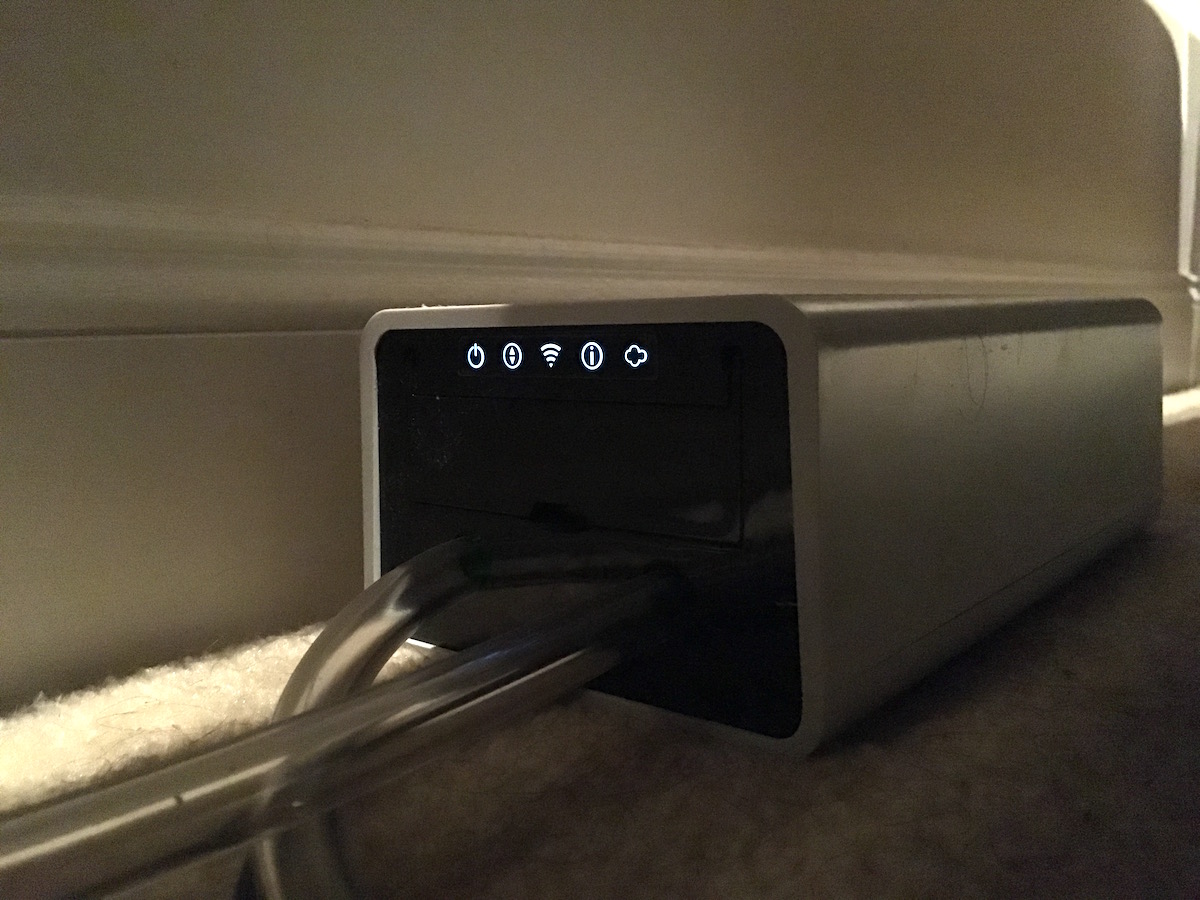When it came time to choose a new mattress this past summer, I decided to wire up our bedroom with Sleep Number and Sleep IQ. Casper gets a whole lot of tech press, for reasons that aren’t entirely clear given their now commonplace bedding materials and a limited one-mattress-fits-all product lineup. Whereas I truly hoped to embrace technology as a potential means of enhancing our sleeping experience. Sleep Number seemed to fit the bill. And, four months in, we’re extremely satisfied with our decision.
After hours of research, including extensive and appreciated online pre-sales chat along with an impressive Consumer Reports’ endorsement, I ended up purchasing the entry-level Sleep Number C2 model with a SleepIQ upgrade. Interestingly, the same core components and functionality are found within all Sleep Number mattresses (that we’ll get to in a minute). What differs are things like padding and cover thickness or composition. Indeed, the Sleep Number C2 is Consumer Reports second highest rated bed… right behind the Sleep Number i8, but at 1/3rd the cost. Having replaced a pair of name brand mattresses the last few years, due to depressingly rapid deterioration, we’re appropriately conservative with ongoing bedding investments.

Sleep Number’s claim to fame is producing an infinitely adjustable bed. This is accomplished by a small, shoe box-sized pump (aka the “Firmness Control” module) that is mated, via two clear tubes, to a pair of industrial strength air mattresses – one for each occupant. My pump fits under and behind our platform sleigh bed with plenty of clearance. When not actively inflating or deflating, as it is 99% of the time, it sits there silently. When in action, the pump does emanate sound – yet the to-be-expected noise is short-lived and rather mild. Of course, introducing a mechanical component adds some risk in terms of reliability. But Sleep Number provides what looks to be a relatively reasonable 25 year limited warranty — full coverage the first two years, followed by a depreciating amount starting with year three – at 72% coverage, then dropping 4% a year. However, unlike my prior two failed mattresses, I also gain some peace of mind with a modular system. Should one component fail, I’m not on the hook for an entirely new bed.

Sleep Number firmness is controlled via remote and, irrespective of bed model, all are wireless at this point. Although the more modern, sexier variant (along with a newer, quieter pump) isn’t bundled with the C2… unless you upgrade to Sleep IQ — more on that later. Button count varies, dependent upon how you trick out your bed (via, say, an adjustable base or temperature-controlled layer). My AA-powered remote is minimalist, as I like it, with four primary buttons. The side one toggles which of the two air chambers we’re interested in looking at, along with a customizable display label – like “Dave”. Two buttons increase and decrease firmness in 5 point increments on a 0 – 100 scale and another button serves dual purpose as ‘menu’ and ‘select’. Picking up the remote turns on the display and immediately connects it to the pump over 802.15.4 RF. And, the real beauty is, you (and your partner) can adjust firmness whenever the mood strikes. I prefer a firmer bed and have generally settled in around 65 — raising pressure when I want it even firmer for TV-viewing or lowering it a bit the days I’m sore from the gym. My pregnant wife also prefers a firmer sleep surface (about 70)… at the moment. But I’m fairly confident she’ll significantly soften it up a few months from now.

While the remote looks sharp and performs as it should, it doesn’t feel like the most solid accessory and the plastic screen is prone to scuff marks. Fortunately, there is another way…
Beyond actual sleep comfort, what further piqued my interest in Sleep Number is their relatively new “Sleep IQ” technology… that brings smarts to your bed — with functionality similar to what one might find in an activity tracker or health monitor. But, instead of some crazy powered strap you slip under a sheet or sleeping in a wristband that collects limited data from a single location, an entire Sleep Number air chamber becomes a total body measurement instrument. Sleep IQ is a $300 upgrade that includes the circuitry required to sample changes in air pressure, reportedly 500 times a second, and the wireless communication capabilities to get at that info. In the case of my base C2 bed, for that same fee, I ended up with an upgraded remote and compressor – score! Double bonus: The Sleep IQ smartphone app will connect directly to your pump as an additional, virtual Sleep Number remote.
Sleep Number Sleep IQ knows my wife is pregnant, pees a lot. pic.twitter.com/eN6kXmJhoU
— Dave Zatz (@davezatz) July 14, 2015
Much of the Sleep IQ tech lives in the compressor – there resides the BAM Labs brains that collect the data, along with WiFi and Bluetooth. And, in talking with Sleep Number VP Pete Bils, the challenge is not in detecting movement but filtering out noise. Indeed, the system is sensitive enough to pick up footsteps or dropped objects in the room. What does get captured, analyzed, and assigned a score (1-100) is heart rate, breathing rate, and presence… with the ability to distinguish an adult from a child or pet and without being impeded by a memory foam topper. In my experience, I’ve generally found Sleep IQ measurements both fascinating and on target – other than the periodic missed late night trip to the bathroom and the current inability to distinguish intentional wakefulness (while, say, watching TV) from restless sleeping as my Fitbit Charge does.
@BenBajarin The trick with "health" data – is it actionable? By somewhat mating restfulness to bed firmness, it's far more useful than most.
— Dave Zatz (@davezatz) July 14, 2015
Many factors contribute to sleep quality, yet Sleep Number takes it to another level in terms of actionable intelligence. Jawbone may help you monitor caffeine intake, but Sleep IQ results can directly lead to Sleep Number adjustments. Having said that, they too recognize the need for additional context… and provide a journaling feature online and within their mobile apps (which have seen several updates since I first installed them) – that I’m too lazy to put to use. In fact, Sleep Number commissioned a two-month 44 couple study that concludes folks were able to successfully improve their restfulness via Sleep IQ insights — along with some interesting tidbits like, for one woman, a cat sharing the bed quantitatively increased her restlessness.
Welcoming the Internet of Things into your bedroom could reasonably lead to privacy concerns. For example, I assume Sleep Number can identify periods of, uh, adult activities. I asked Bils specifically if they could even calculate my body weight by the amount of air displaced … and he believes that’s doable. But the company’s Consumer Insight team runs focus groups to ensure they produce features that appeal (like kids bed uncarriage lighting) versus things that might creep us out and any shared data is deidentified. So, for me, Sleep IQ insight outweighs any potential or perceived risk. Regarding the future, Sleep Number continues to crank away, clearly seeing value and further opportunity in a connected platform. Says Bills, “As we expand our product line and user base, we’re beginning to look into what we want to talk to.” Like many, they’re taking a cautious, slower paced approach as the space shakes out — they see many players and potential integrations, like Apple Health, but no clear or universal standard.

I love the Sleep Number bed. My sleep number is 99. We’ve stayed at several Hotels with them and I’ve had my best nights sleep in them. When it’s time for me to get a new mattress at home, I plan on getting one of these.
Dave, you should check out and try to do a comparison with the Luna mattress cover when it comes out next year.
Can you use any platform bed?
David, in my case, we retrofitted our existing platform bed which is not made up of slats but, rather, sheets of manufactured wood. If you had something with widely-spaced slats, you’d probably want to pick up something from Home Depot or purchase one of their foundations.
Tkin1t3asy, that does look more interesting than other bed accessories. Might be worth checking out on our guest beb.
aaronwt, didn’t know some hotels had Sleep Number. That’s pretty cool for owners who might want similar while on the road (and I say that after two or three little summer getaways spent on unsatisfying mushy hotel mattresses) and for folks to better test drive compared to 20 minutes in a showroom.
How do you lower the bed when the hand held unit will not come on after the hand held unit had raised the bed?
Dave, if you ever have the need for a motel in Utica NY The Radisson there has sleep number beds. It is the only place I have stayed that has had them. But my guess is other Radisson’s have them also. http://hotels.radisson.com/ny/utica/hotels_utica_ny_utica.html
I liked the beds but not enough to buy one, but they sound like they have advanced since the last time I looked at them.
Donald, try replacing you batteries?
Hopefully, the prices on these come down as more competition catches on. I’ve seen them on sale for more reasonable amounts, but the retail pricing is hard to swallow for a mattress.
But hey, I’ve never been pregnant either! :)
Well, it took me a couple of days, Dave, but after easily getting past your Actiontec router, I finally managed to get hooks into your bed. Thank god for the WiFi.
Now, I’m not a monster. I absolutely promise not to mess with your wife’s side of the bed, as that would obviously be wrong. However, if you start waking up between 2am and 5am and wondering if an earthquake has just taken place, don’t worry! It’s just a script I worked up to rapidly inflate and deflate your bed. Enjoy the connected lifestyle.
Also, I assume you are already following, but in case you aren’t, some clever person has created a twit account specifically for you…
Jody, Seems like most mattresses across the board are priced well beyond what they should run. Like many bedding retailers, Sleep Number frequently has sales. However, unlike many others, you know which model you’re dealing with. For example, the Serta or Sealy mattresses at Macy’s will have different models/names than the ones at Sleepy’s – which makes price comparison and reviews difficult. Plus there’s been consolidation – Tempurpedic owns Sealy, which sells as Sealy, Sterns & Foster, and Basset. Serta and Simmons are one in the same. These sorts of things probably contribute to the huge markup in the mattress industry. At least with Sleep Number, I almost get it given the technology involved plus the expense in running their own retail network and massive amounts of advertising.
Oops, just invested in an iComfort series bed coupled with Pointehaven’s 400 thread count sheets. Included a platform that raises and lowers. Love the combination and hope the mattress lasts a good 5-10 years. Once it wears out, will look into Select Comfort then
My next bed will definitely need an adjustable base… but it may be awhile. :)
I got Casper bed about 45 days ago and so far it’s pretty good. I had been using an overly expensive Sterns&Foster that had sagged a lot and was killing my back. The Casper is a great price for the quality but I’m not sure I’m in love with it.
I want to duplicate the comfort of a Ritz Carlton or Westin bed setup, but at a reasonable price. Not sure if that’s possible.
Tom, one of the mattresses I referred to above was a fairly pricey S&F that sagged uncomfortably like just a year in. My wife and I prefer firmer beds and Sleep Like The Dead seemed to suggest Casper might be too soft for us. Was thinking about one for the guest bedroom. But then I’d also need a new platform bed or solid foundation. If they were to update their lineup with more options…
@atmusky The Radisson Cross Keys outside Baltimore also has them; stayed there on a work trip once. Unfortunately, the bed in question slowly deflated throughout the night and ended up with me waking up in a deep well.
The modular components sound great, in theory, but for how long do they guarantee parts availability? If after 5 years they don’t make the replacements anymore, the warranty isn’t so modular.
Then again, I generally expect a bed to last 10 years in reality, so a built-in 44% discount on the replacement isn’t such a bad bargain.